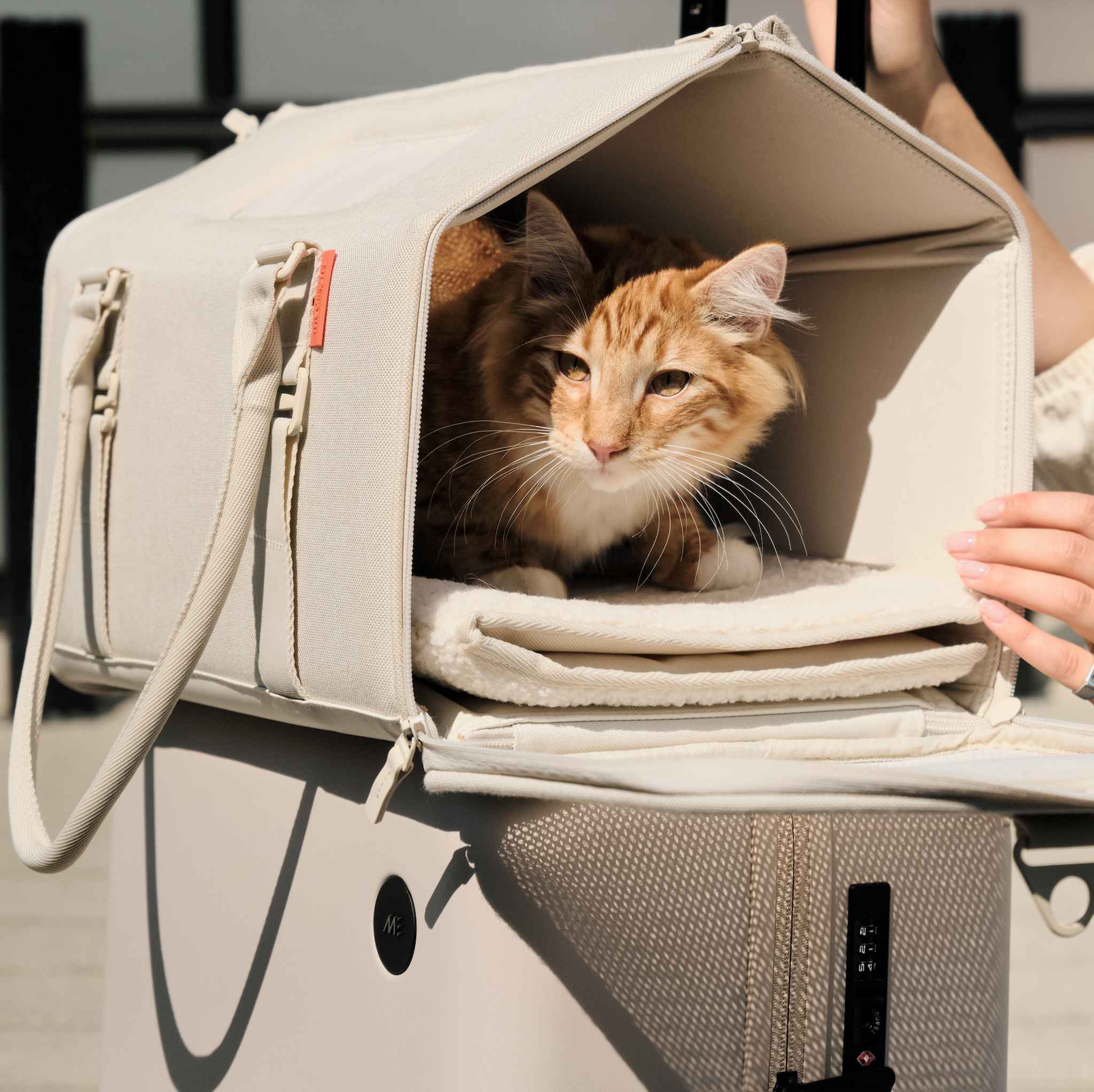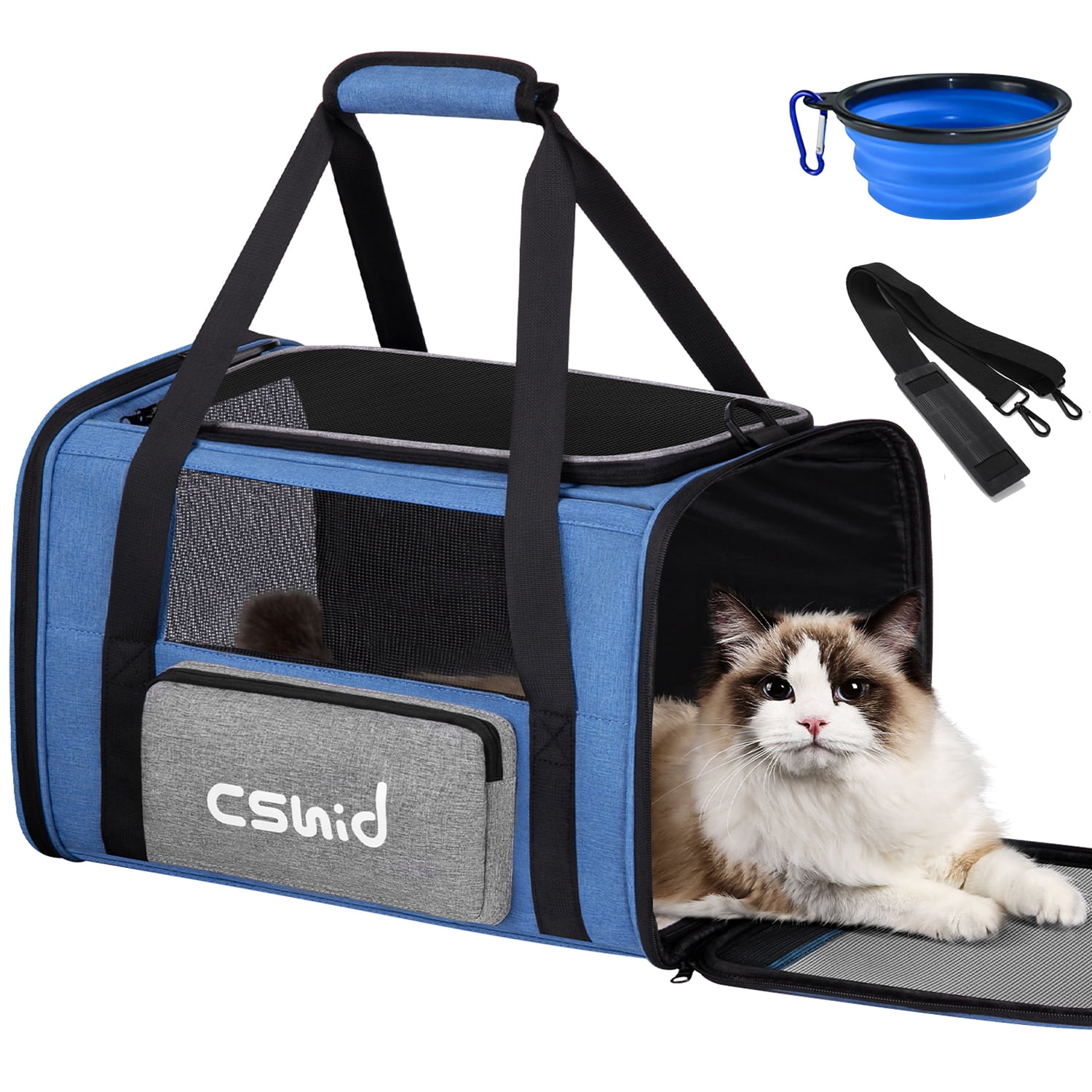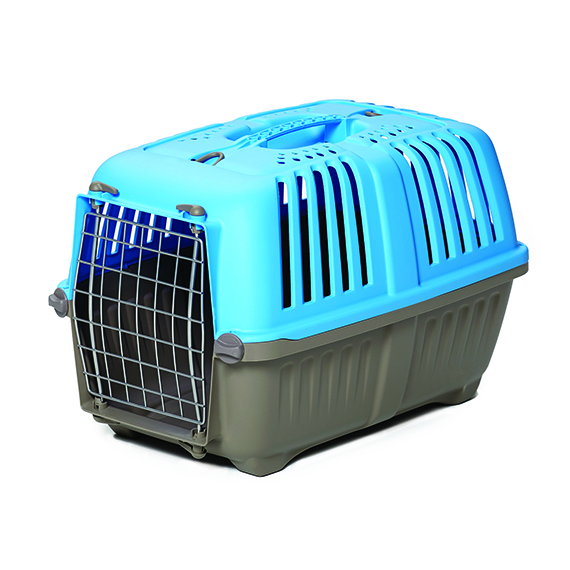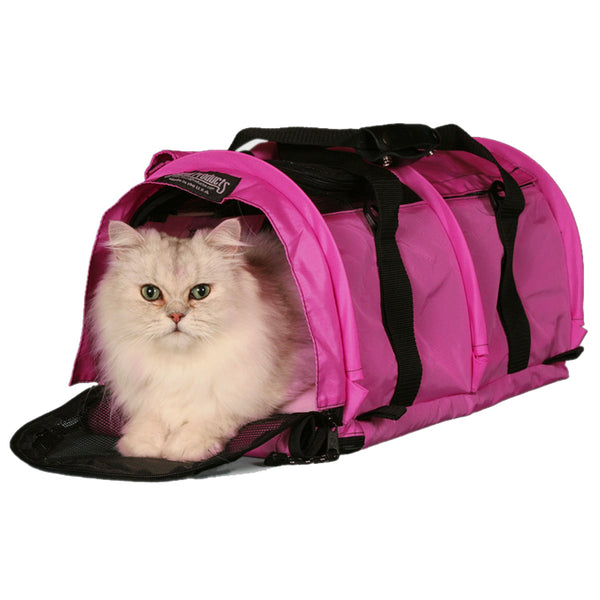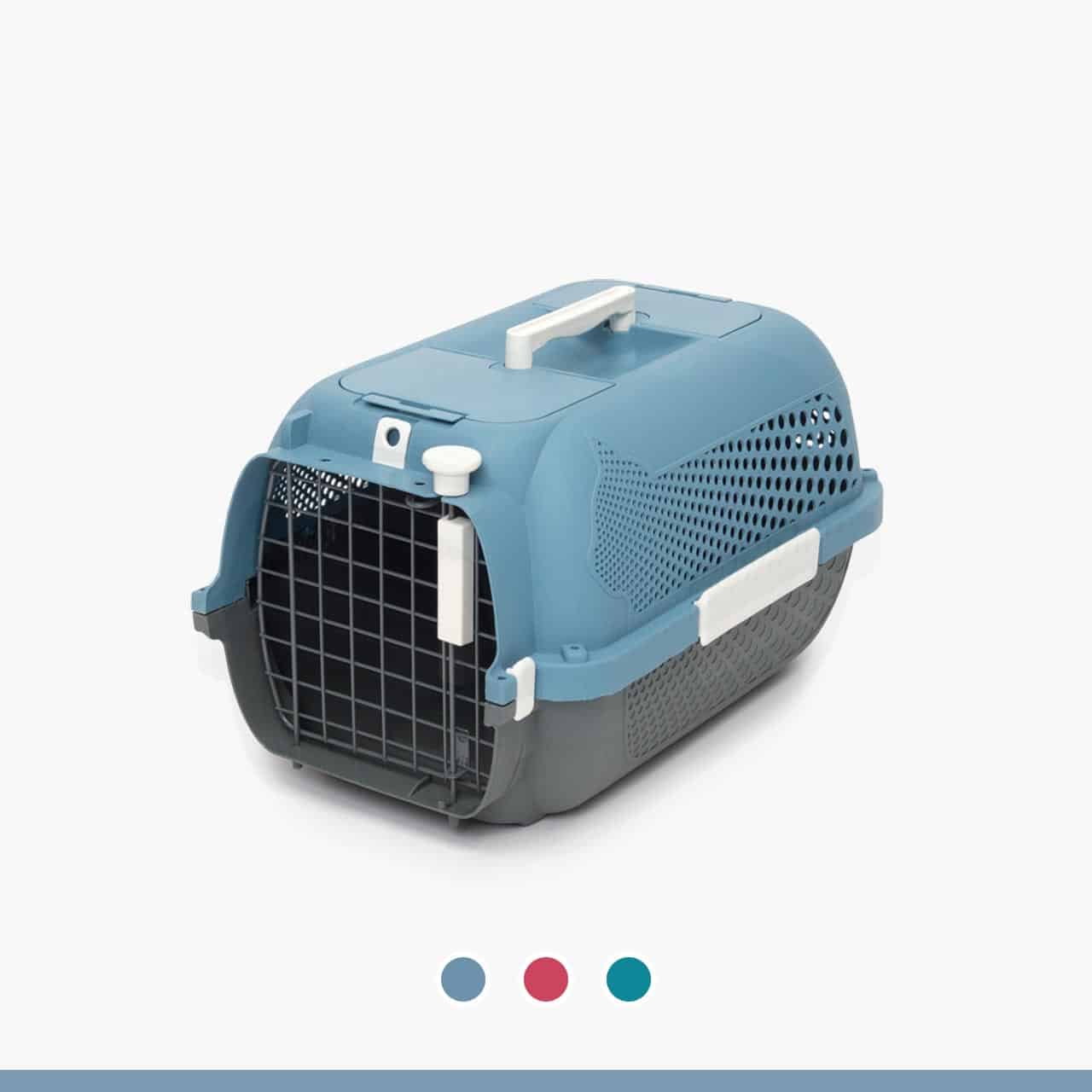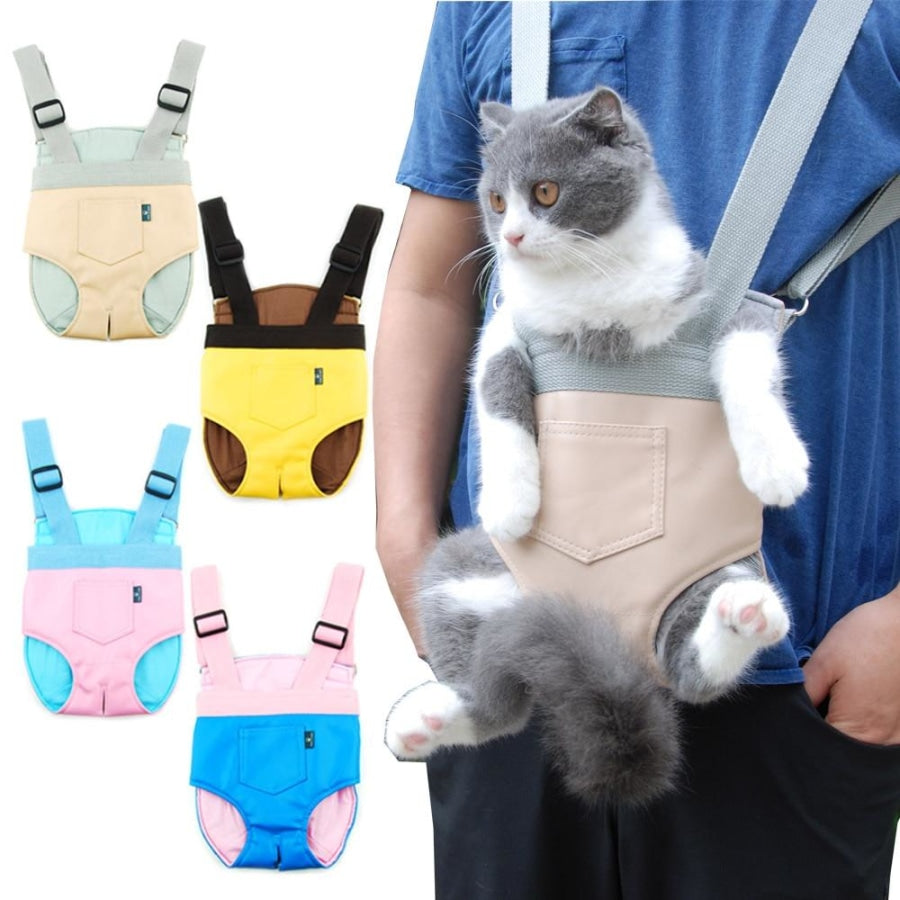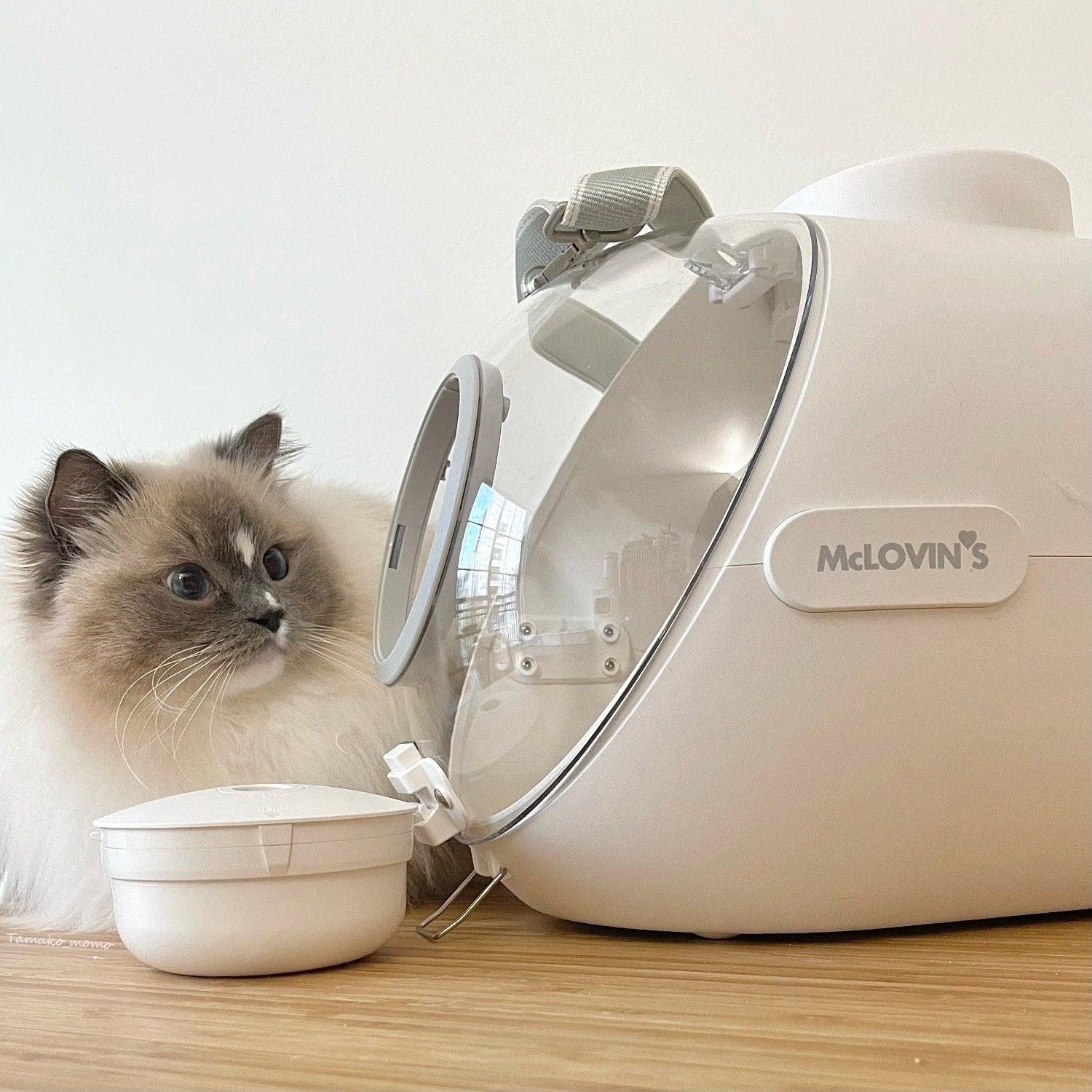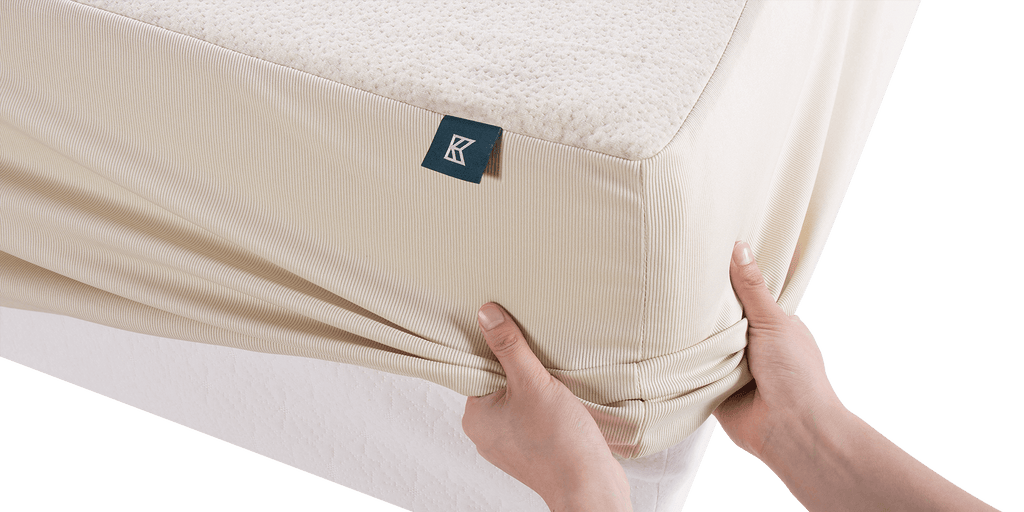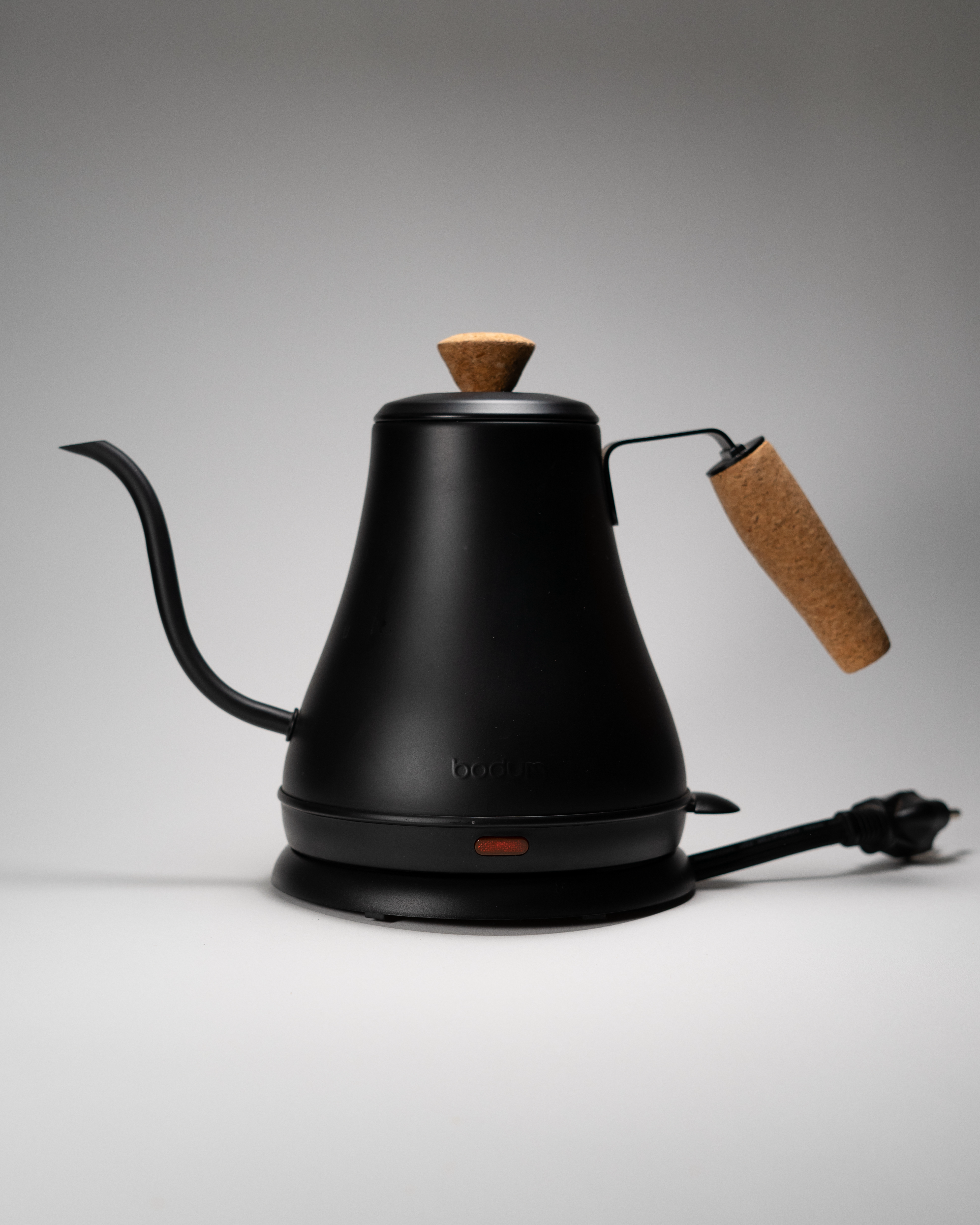How to Get Your Cat Into a Carrier – tuft + paw
-
By A Mystery Man Writer
-
-
4.5(230)
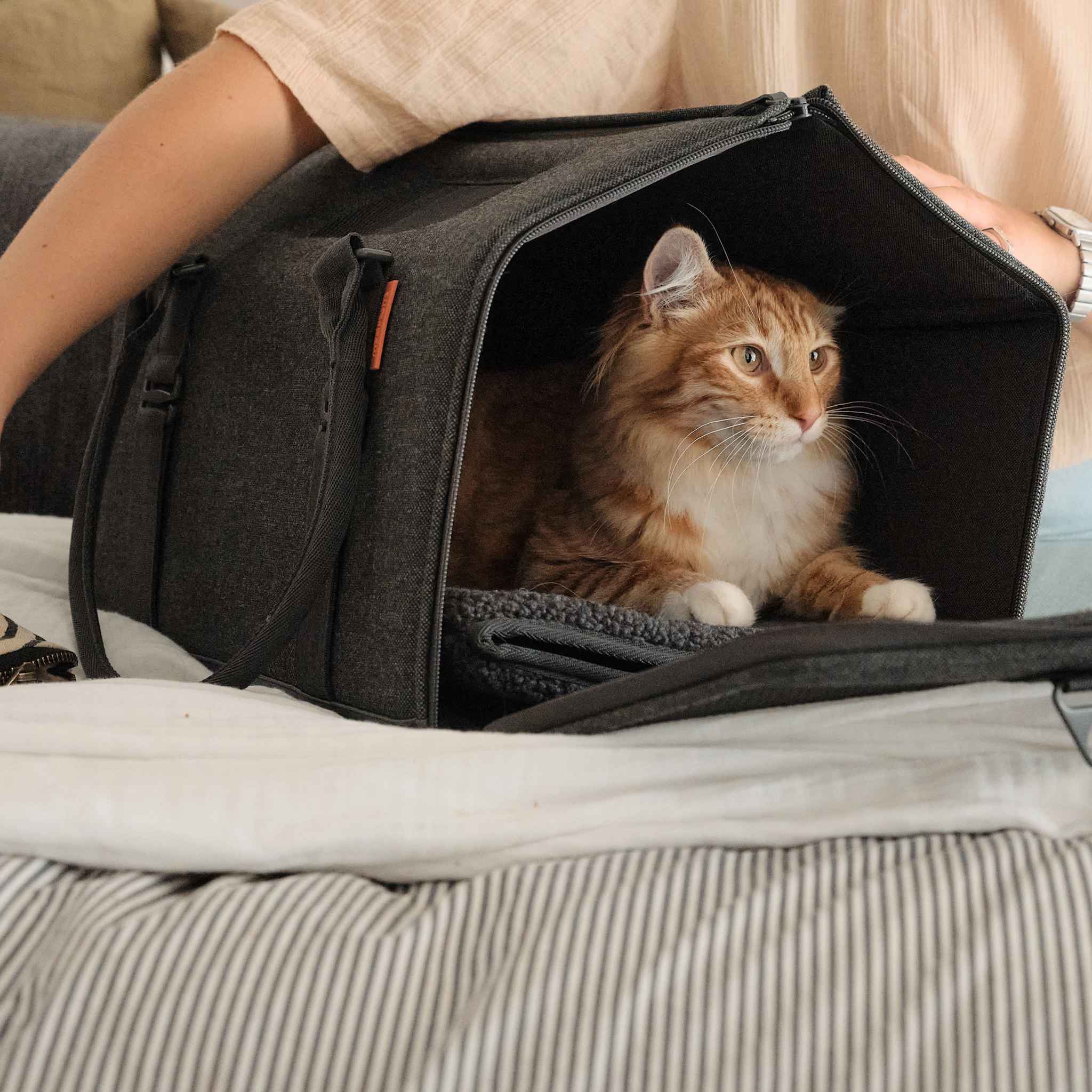
Product Description
Getting your cat into a carrier can be a challenging task, especially if they’ve developed a fear or aversion to it. However, with the right approach and a little patience, you can help your cat feel more comfortable and confident about entering their carrier. In this article, we’ll walk you through the steps to succes.
Beautiful modern cat furniture that both cats and humans will love. Shop our collection of cat beds, cat trees, scratching posts, litterboxes, and more. Flat rate shipping and 30 day returns.
.
Getting your cat into a carrier can be a challenging task, especially if they’ve developed a fear or aversion to it. However, with the right approach and a little patience, you can help your cat feel more comfortable and confident about entering their carrier. In this article, we’ll walk you through the steps to successfully get your cat into a carrier, which will lay the foundation for low-stress travel experiences and vet visits.
Here at tuft + paw, we’re cat experts. The information in this article is based on consultation with a veterinarian, cat behaviorist, extensive online research, and our own experience as cat parents.
Note: If you need to get your cat into the carrier ASAP, check out the blanket method below. If you want to learn how to reduce your cat’s stress long-term and create positive associations with the carrier, read on.
Cheat Sheet: Getting Your Cat Into the Carrier Fast
The Blanket Method
For best results, perform the blanket method inside a small room where your cat can't run away and hide (e.g. bathroom)
Open the carrier and place it on its end so the door is facing upwards. Keep the carrier nearby but hidden from your cat.
Grab a blanket/towel/large clothing item.
Using the blanket, pick up your cat and wrap them up securely and gently. Leave their head exposed.
Slide your blanket-cat-wrap into the carrier.
Close the carrier door. Your cat will unroll themselves on their own.
The Blanket Method is an excellent quick fix, but if you want to eventually get your cat comfortable with the carrier and make traveling with your cat much easier, you’ll need to take a long term approach. Here’s how to make it happen….
Porto Cat Carrier in Sand by tuft + paw - Shop Here
Preparing the Cat Carrier
Choosing the Right Carrier
Our favorite tip for getting your cat into the carrier is to use a carrier with a large top entryway. This makes the process much easier because you can simply place your cat into the carrier rather than shoving them through a small doorway (which is way more stressful). Top entryways also make it much easier for a vet to remove an anxious cat from the carrier. Beyond that, look for the usual carrier features: ample size, washable bedding, sturdy construction, and plenty of ventilation.
Our list of the best cat carriers is a great place to start if you’re looking for a new carrier (they all have top-entryways too!).
Familiarizing Your Cat with the Carrier
Familiarity plays a key role in reducing your cat's carrier anxiety. The first thing to do when you buy a new carrier is to leave it out in the open where your cat can explore it freely. Make sure the carrier is in a quiet and familiar location, such as a room where your cat spends most of their time. Leave it open permanently so your cat eventually becomes completely comfortable with it—they should see it as a cozy place to hang out.
Tip: If your carrier can be extended or converted into a more open shelter, take advantage of those features! They’ll make the carrier seem more homey and less carrier-like.
@tuftandpaw Cats not liking their cat carriers is super common, but why? Probably because they are being stuffed and forced in. Believe it or not, you actually don't need to do that. By finding a soft-sided cat carrier that offers side and top entry options, you can gently guide your kitten into a carrier that feels just like their bed. #bestcatcarrier #softsidedcatcarrier #portablecatccarrier #largecatcarrier #catbed #airlineapprovedcatccarrier #catcarrier #cozycatcarrier #bestcatcarrier ♬ original sound - Instrumental Music
Creating Positive Associations With the Cat Carrier
Now that the carrier is available for exploration, it’s time to start building your cat’s positive associations with the carrier. By creating positive experiences in and around the carrier, you can help your cat view the carrier as a safe and comfortable space. If your cat already has negative associations with the carrier, this process will take longer but should still be applicable.
Make the Carrier Comfortable
Place your cat’s favorite blanket or soft snuggly item inside the carrier. This will make it smell more familiar and create an appealing environment for resting and snoozing. You can also try putting one of your clothing items inside for a similar effect. Keep in mind, most soft sided carriers will come with an interior bed, but hard sided carriers usually do not.
Porto Cat Carrier in Charcoal by tuft + paw - Shop Here
Placing Treats and Toys Inside
Putting treats or their favorite cat toys around or inside the carrier is a great way to attract your cat's attention. If they’re reluctant to go inside the carrier at this point, give them treats nearby and over a few days place the treats closer and closer to the carrier. We also recommend incorporating the carrier into your cat’s playtime (e.g. using the carrier to hide before pouncing on a wand toy).
Using Pheromones or Catnip
Feliway spray, which contains synthetic feline pheromones, can be sprayed inside the carrier to create a calming effect. Similarly, sprinkling a bit of catnip or putting a catnip-infused toy inside the carrier can help encourage your cat to play.
Feeding Your Cat In the Carrier
Mealtimes are a safe and enjoyable part of the day, which makes them a powerful tool for building positive associations with the carrier. Start by placing your cat’s food bowl near the carrier, and over the course of a few days/weeks move it closer until it’s fully inside the carrier.
Dock Bowl and Stand by tuft + paw - Shop Here
Gradual Cat Carrier Training
Now that you’ve spent some time building positive associations with the cat carrier, it’s time to acclimate your cat to being carried in it. Just like the last phase, this process takes time and will require some patience. Here’s how to do it:
Step 1: Close the Carrier Door
When your cat is hanging out inside the carrier, slowly zip/close the door. Your cat may be startled and run away, but try everyday and eventually they’ll get used to the sound and experience of the carrier door closing.
Remember: Always reward your cat with a treat and love after they’ve done something stressful!
Step 2: Carry Your Cat
Once your cat is comfortable being closed inside the carrier, try gently picking up the carrier. Hold it for a few seconds and then put it down. Unzip the door and give your cat a treat once they’re calm. Repeat everyday, gradually increasing the duration and incorporating a short walk around your home.
Next, start walking outside with your cat in the carrier. Work your way up to 10 minute walks if you can, and stick to quieter side streets where possible.
Step 3: Drive With Your Cat
If you drive, the next step is to bring your cat into the car and turn the car on. Don’t drive just yet—idle and let them get used to the sound and sensation of the car. Repeat a couple times, then start going for short drives with them in the carrier. You can also mix these drives with a fun outing, like taking your cat to a quiet park for some on-leash exploring. If you plan to drive with your cat frequently, it could be worth looking into the best cat carriers for car travel.
Porto Cat Carrier in Charcoal by tuft + paw - Shop Here
Getting Your Cat Into the Carrier
All of this carrier training is great, but now it's time for it to pay dividends. Here are some methods for getting your cat into their carrier via top entry and side entry. If your cat is still difficult to control, try the blanket method at the top of this article.
Note: If your cat hides when they see the carrier, perform these methods inside a closed small room (e.g. bathroom) so they can't escape.
Top Entry Cat Carriers
Place the carrier nearby and open the top entryway.
Pick up your cat with one hand on their chest and one hand supporting their hind legs. Hold their legs tight to their body, and their body against your chest to minimize squirming.
Lower your cat into the carrier. If possible, have a second person keep the top entryway wide open and help guide your cat's legs in. This will prevent your cat from grabbing the sides of the carrier.
Close the top entryway, and you're done!
Give your cat a treat and some pets while they're inside the carrier.
Porto Cat Carrier in Sand by tuft + paw - Shop Here
Side Entry Cat Carriers
Method 1 (for carrier trained cats)
Put a treat inside the carrier and call your cat over.
Once they're inside the carrier, close the side entryway.
Give them another treat and some pets. They deserve it!
Method 2 (for reluctant cats)
Place the carrier on its end and open the side entryway so its facing up. Alternatively, you can have a second person hold the carrier upright. Keep the carrier nearby but out of your cat's sight.
Pick up your cat with one hand on their chest and one hand supporting their hind legs. Hold their legs tight to their body, and their body against your chest to minimize squirming.
Quickly slide your cat into the carrier. You can go head-first or tail-first, whichever is easier. Tail-first is better for anxious cats because they don't see the carrier until they're inside it.
Close the carrier!
Give your cat a treat and some pets to comfort them.
Patience and Consistency
The process of getting your cat into a carrier requires patience and consistency. It's essential to take small steps and not rush the training process. Each cat is unique, and the time it takes for them to feel comfortable may vary. Be consistent in your training efforts, and celebrate even the smallest victories along the way.
Handling Carrier Fear or Anxiety
Some cats may exhibit fear or anxiety when it comes to entering a carrier. Here are a few techniques to help manage and alleviate their anxiety:
Identifying Triggers
Try to identify and understand any triggers that cause fear or stress for your cat. It could be the sound of the carrier opening or the sight of unfamiliar surroundings. By recognizing these triggers, you can work on desensitizing your cat through gradual exposure and positive reinforcement.
Implementing Calming Techniques
Explore calming techniques such as using pheromone sprays, getting your cat to wear a thundershirt, or creating a quiet environment. These techniques can help relax your cat and reduce their anxiety during the process of entering the carrier.
Cover the Carrier
Covering the carrier with a towel or blanket can help soothe cats with traveling anxiety. This method minimizes stimulation by cutting off visibility to the outside world and muffling loud noises. Some carriers have a built-in privacy flap for this purpose. Just make sure the carrier is still getting adequate airflow and not overheating.
Seeking Professional Help
If you've tried various techniques and your cat continues to display extreme fear or resistance, it may be beneficial to seek professional help. Consult with your veterinarian or an animal behaviorist who can provide specialized advice tailored to your cat's specific needs. They can offer additional guidance to ensure a smoother transition into the carrier.
Conclusion
Getting your cat into a carrier doesn't have to be a daunting task. By following the steps outlined in this guide, you can gradually train your cat to feel comfortable and confident about entering the carrier. Remember to be patient, consistent, and reward their progress along the way. With time and positive reinforcement, your cat will associate the carrier with safety and security, making future travels and vet visits much more manageable. Good luck!
FAQs
How long does it typically take to train a cat to enter a carrier?
The time it takes to train a cat to enter a carrier can vary depending on the individual cat's temperament and previous experiences. It may take anywhere from a few days to a few weeks of consistent training.
My cat becomes aggressive or fearful when I try to put them in the carrier. What should I do?
If your cat exhibits aggressive or fearful behavior, it's important to approach the training process with caution. Consult with a veterinarian or an animal behaviorist for guidance on how to handle your cat's specific needs and behaviors.
Can I use sedatives to calm my cat during the process of getting them into a carrier?
The use of sedatives should be discussed with your veterinarian. They can provide guidance on whether sedation is appropriate for your cat and recommend the safest options if necessary. If you plan to fly with your cat, keep in mind that most airlines do not allow sedated animals on board.
Should I cover the carrier with a blanket or towel during travel?
Covering the carrier with a blanket can help reduce stimulation and create a secure environment for your cat during travel. However, ensure that there is still sufficient ventilation to prevent overheating.
Can I use a carrier for purposes other than travel or vet visits?
Yes, carriers can also serve as a safe space for your cat at home, providing a comfortable retreat during stressful situations such as house renovations or introducing new pets to the household.
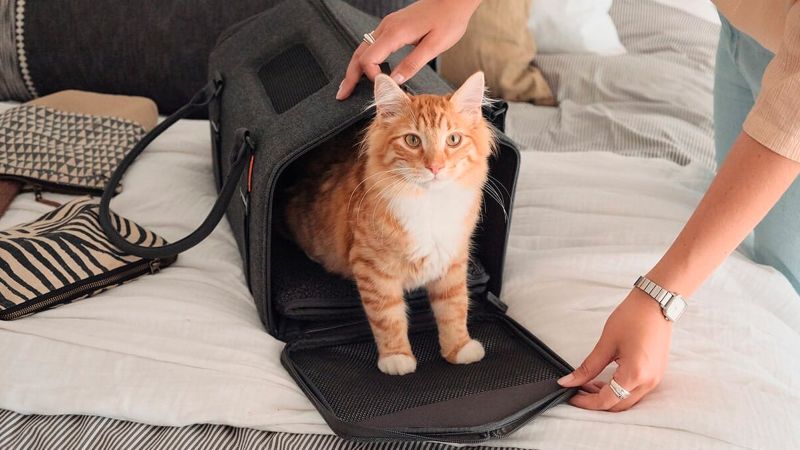
Tuft + Paw launched a new Porto Cat Carrier

How to Get Your Cat Into a Carrier

how to get a cat out of a carrier the low stress way

How to Put Your Cat in the Carrier
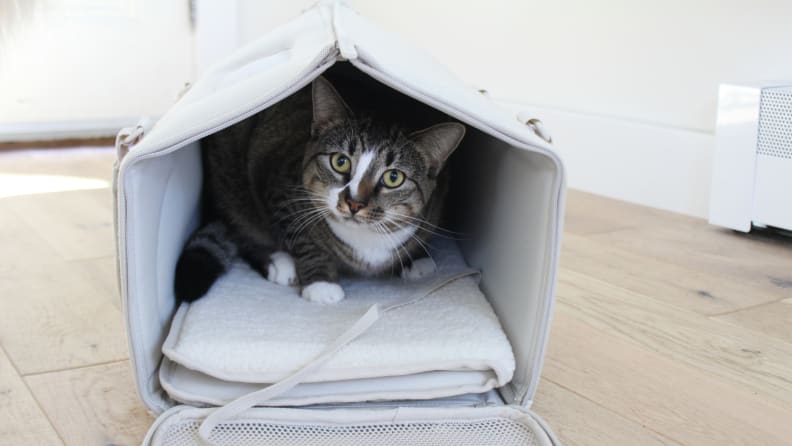
Tuft + Paw Porto Cat Carrier Review: Stylish and functional - Reviewed

How to Travel With a Cat – tuft + paw

Tuft + Paw Porto Cat Carrier Review: Stylish and functional - Reviewed
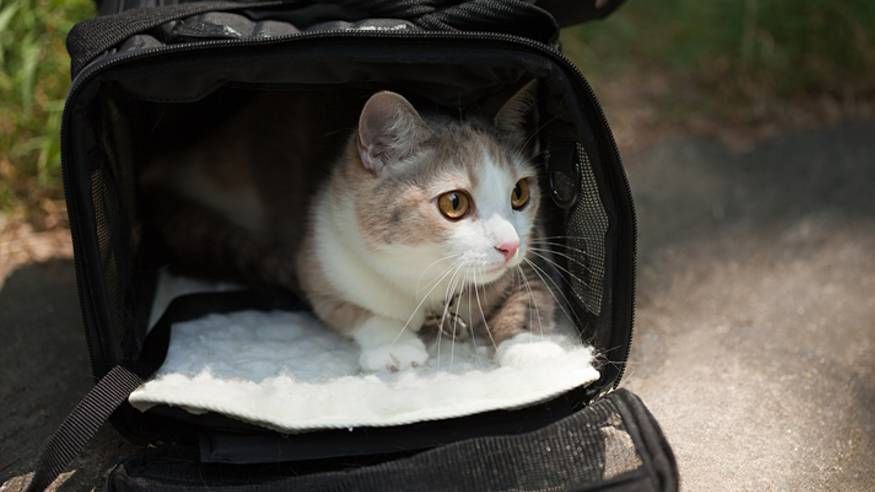
How to get an unwilling cat into a carrier

PawHut 39 Portable Soft-Sided Pet Cat Carrier with

How to get a cat into a carrier
